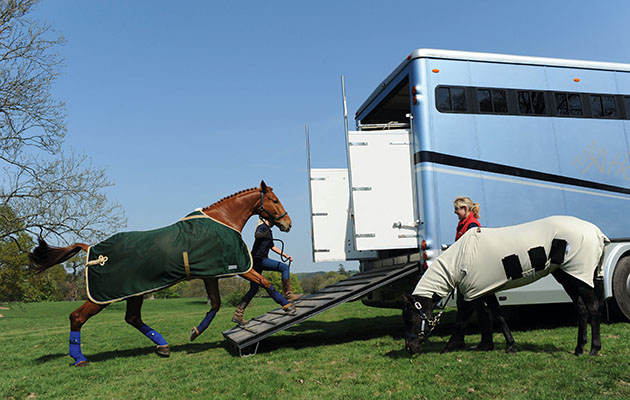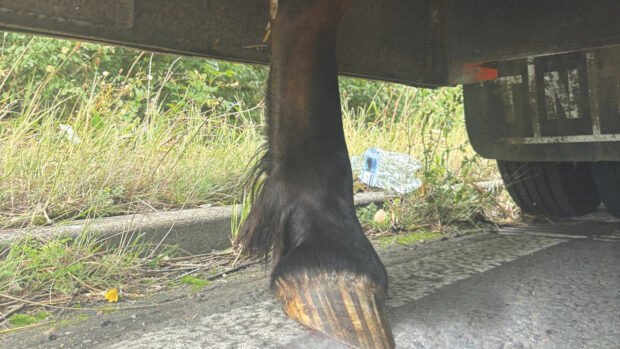If you are going to get out and about with your horse this winter, you are likely to be loading and unloading in the dark. So how can you do this as safely as possible?
1. Think ahead
“Travelling with horses in the dark can present certain challenges, but anticipating these and thinking ahead can ensure that both you and your horse stay safe,” says British Horse Society director of safety, Alan Hiscox.
“Before going out on any journey, always ensure that all lights on the trailer, towing vehicle or horsebox are working correctly. You should tell someone where you are going, and what time you expect to be back.”
2. Be prepared for a break down
Alan also advises being prepared in the event of a breakdown.
“Ensure you have suitable breakdown cover and equine rescue in case of emergencies. Always carry a torch and keep hi-viz in your vehicle, for both you and your horse. This can be used if you break down and need to transfer your horse to a different vehicle.”
3. Opt for soft, ambient lights
It’s common knowledge that horses see better in the dark than we do, but how well do they need to see when they are travelling?
“When you are travelling at night, you should have a light on, but it shouldn’t be a bright light,” says showjumper Tim Stockdale.
“We’ve got soft, ambient red lights that automatically come on in the horse section when I turn my headlights on. It means that the streetlights and passing car headlights don’t affect the horses so much. The sudden flash of light can frighten some horses so a nice ambient light lessens that.”
Dressage rider Spencer Wilton agrees.
“A lot of my horses are very sensitive, so I always make sure there is a light on in the back when travelling them at night,” he says.
“It also means that when you eventually stop to unload them, they aren’t suddenly thrown into bright light when you pull the ramp down.”
4. Get your kit in good order
Spencer also ensures he has everything to hand in an easy to reach place in case lighting is limited when he reaches his destination.
“If you get to the stables late at night, the last thing you want to be doing is hunting through the lorry in the dark trying to find stuff, so have an idea of where everything is.”
5. Find a safe spot for loading and unloading
Loading and unloading in the dark poses its own risks, but by thinking ahead, you can make the experience less stressful.
“If you load in the dark often, think about getting a portable light to aid loading and unloading if you have no lighting facilities at your yard or destination,” advises Alan.
Parking the lorry or trailer in a suitable place is also key, as Tim explains.
“Park up in a safe area so that if your horse plays up, he wont injure himself on any objects nearby, especially if it’s dark, and, if possible, don’t load or unload on concrete. Try and unload onto a surface that has purchase, especially if the horses are tired and unsteady on their legs.”
Continued below…

Who rules the roost in your horsebox? (This should put a smile on your face…)
Your horse may assume that they take pride of place in the horsebox, but they would be mistaken...

Looking to buy a second-hand horsebox? Then you need to read this first…
You have decided to buy a second-hand horsebox, but where do you start — and what questions should you ask?
6. Lessen the angle of the ramp
Lessening the angle of the ramp will also help weary horses.
“I’m always very conscious of where to park so that the ramp is as flat as possible, making it easier for the horse to walk down it,” says dressage rider Becky Moody.
“We have a big light at the top of the ramp which lights up the area at the back of the lorry and helps the horse see where he is putting his feet when walking up and down the ramp,” adds Becky.
“I also make sure the inside of the lorry is well-lit when loading so they aren’t walking into a dark box.”
This article was first published in the 27 October 2016 issue of Horse & Hound magazine




